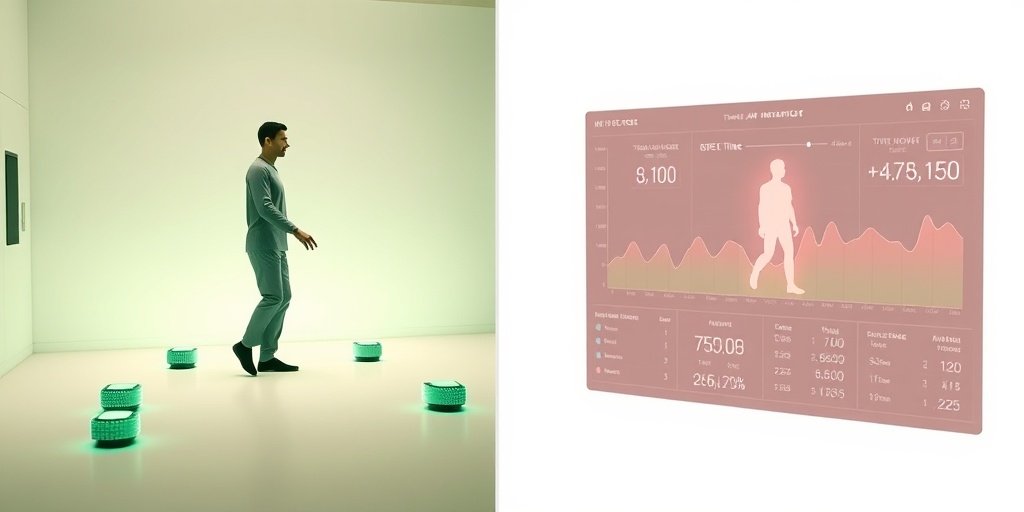⚡ Quick Summary
This study explored the use of the Timed Up and Go (TUG) test combined with IMU sensors to objectively assess balance dysfunction in patients with unilateral vestibular impairments. The findings revealed that an artificial neural network (ANN) approach provided the highest sensitivity and specificity for detecting functional deficiencies.
🔍 Key Details
- 📊 Participants: Patients with unilateral vestibular impairments
- 🧩 Methodology: TUG test performed using six MediPost devices
- ⚙️ Analytical Approaches: One sensor, six sensors, and ANN
- 🏆 Performance Metrics: Sensitivity and specificity rates for each approach
🔑 Key Takeaways
- 📊 The TUG test is a simple yet effective method for assessing balance dysfunction.
- 💡 IMU sensors enhance the objectivity of balance assessments.
- 🏆 ANN approach achieved the best sensitivity (88%) and specificity (92%).
- 🔍 One-sensor approach can serve as a quick screening tool.
- 📈 Maximum angular velocities (MAV) and total time (TT) were critical metrics for analysis.
- 🌍 Study conducted by a team of researchers including Kamiński et al.
- 🆔 Published in: Sci Rep, 2025; 15:17440.

📚 Background
Vestibular impairments can significantly impact an individual’s ability to perform daily activities, leading to challenges in mobility and balance. Traditional assessment methods often lack objectivity, making it difficult to gauge the extent of these impairments. The integration of technology, such as IMU sensors, into clinical assessments offers a promising avenue for more accurate evaluations.
🗒️ Study
The study aimed to determine the effectiveness of the TUG test as an objective measure of balance dysfunction in patients with unilateral vestibular impairments. Researchers utilized six MediPost devices to collect data, analyzing it through various approaches to identify the most effective method for detecting functional deficiencies.
📈 Results
The results indicated that the ANN-based approach yielded the highest sensitivity and specificity, with rates of 88% and 92%, respectively. The one-sensor approach also demonstrated promising results, achieving a sensitivity of 95% for maximum angular velocities (MAV) and 73% for total time (TT). These findings suggest that both approaches can be valuable in clinical settings.
🌍 Impact and Implications
The implications of this study are significant for the field of vestibular rehabilitation. By utilizing the TUG test in conjunction with IMU sensors, healthcare professionals can obtain objective measurements of balance dysfunction, leading to improved patient assessments and tailored rehabilitation strategies. This approach could enhance the quality of care for individuals with vestibular impairments, ultimately improving their quality of life.
🔮 Conclusion
This study highlights the potential of combining traditional assessment methods with advanced technology to improve the detection of functional deficiencies in patients with vestibular impairments. The use of the TUG test alongside IMU sensors and ANN analysis represents a significant step forward in objective balance assessment. Continued research in this area is essential to further refine these methods and enhance patient care.
💬 Your comments
What are your thoughts on the integration of technology in assessing vestibular impairments? We would love to hear your insights! 💬 Leave your comments below or connect with us on social media:
A method for detection of functional deficiencies due to unilateral vestibular impairment using the TUG test and IMU sensors.
Abstract
Vestibular impairments affect movement and can result in difficulties with daily life activities. The main aim of this study is to determine whether a short, simple test such as the Timed Up and Go test (TUG) can be an objective method of assessing balance dysfunction in patients with unilateral vestibular impairments. The TUG test was performed using six MediPost devices. The analysis was performed in three ways: (1) an analytical approach based only on data from one sensor; (2) an analytical approach based on data from six sensors; (3) an artificial neural network (ANN) approach based on data from six sensors. The best results were obtained using maximum angular velocities (MAV) of rotation and total time (TT) for approaches 1 and 2, and using 43 different features for approach 3. The following sensitivities and specificities were achieved: MAV 95% and 70%, TT 73% and 88% for approach 1; MAV 60% and 91% and TT 64% and 98% for approach 2; 88% and 92% for approach 3. The ANN-based six-sensor approach demonstrated the best sensitivity and specificity; however, the one-sensor approach might be used as a simple screening test.
Author: [‘Kamiński M’, ‘Kotas R’, ‘Tylman W’, ‘Janc M’, ‘Zamysłowska-Szmytke E’, ‘Józefowicz-Korczyńska M’]
Journal: Sci Rep
Citation: Kamiński M, et al. A method for detection of functional deficiencies due to unilateral vestibular impairment using the TUG test and IMU sensors. A method for detection of functional deficiencies due to unilateral vestibular impairment using the TUG test and IMU sensors. 2025; 15:17440. doi: 10.1038/s41598-025-02350-y